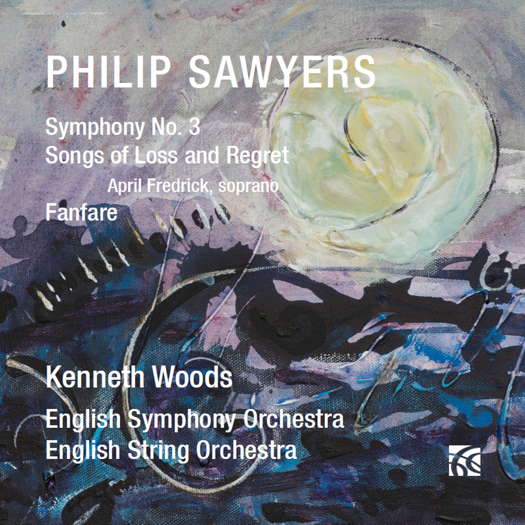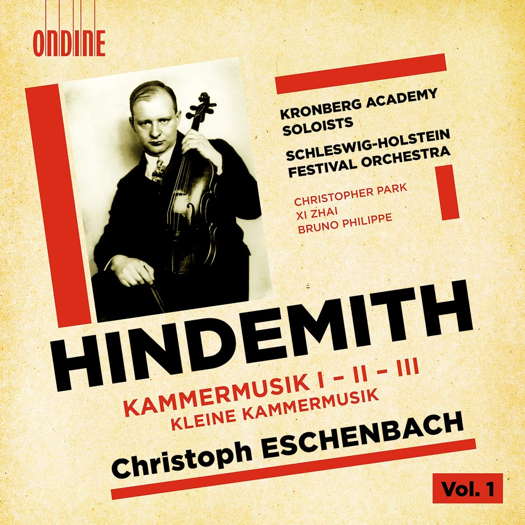 MET STARS: From 2002 until 2021 the late Maria Nockin reported from Arizona, mostly on live opera productions.
MET STARS: From 2002 until 2021 the late Maria Nockin reported from Arizona, mostly on live opera productions.
 SPONSORED: CD Spotlight. View from the Celli - Philip Sawyers' Symphony No 3 impresses Alice McVeigh.
SPONSORED: CD Spotlight. View from the Celli - Philip Sawyers' Symphony No 3 impresses Alice McVeigh.
All sponsored features >>
ARTICLES BEING VIEWED NOW:
- Régine Crespin
- Hector Berlioz
- Ruth Railton
- Marián Varga
- Profile. A Very Positive Conductor - Paul Bodine talks to Los Angeles Opera's Music Director Designate, Domingo Hindoyan

Youthfulness and Energy
GIUSEPPE PENNISI listens to
chamber music by Paul Hindemith
'... an explosion of happiness and a real whirlwind from the very fast introduction to the vibrant finale ...'
A small Finnish record company, Ondine, has just released a CD with chamber music by the then young Paul Hindemith, a composer best known for his theoretical works. At the end of the 1930s, in fact, Hindemith wrote The Craft of Musical Composition, in which he ranked all musical intervals, from the most consonant to the most dissonant. From this work, Hindemith's compositional technique emerges; he called it objective music and continued to use it throughout his life. In another important work, Unterweisung im Tonsatz, he summed up the concept of Grundton or 'fundamental tone', a generator of all musical, melodic, harmonic and contrapuntal construction. He attempted a scientific-anthropological demonstration of the tonality as a natural phenomenon, in his views as evident as the atonality of Schoenberg. Filippo Tommaso Marinetti called Hindemith an 'exponent of futurist machinism'. Hindemith's futurism, however, stops in the 1930s, where we find a Bachian rethinking with a decidedly diatonic harmony. In operas for the theatre, however, Hindemith's style maintains that expressionist style that is sometimes a pedagogical theatre.
The four compositions on this CD were conceived several years before Hindemith developed his theory. They are dated between 1921 and 1925. In 1918, after completing his military service, Hindemith, then twenty-three years old, had returned to his job as concertmaster of the Frankfurt Opera House orchestra and appeared on the concert stage too as a chamber musician; there he performed mostly on the viola. In a few years, he obtained international recognition, first as an interpreter and then as a composer.
Written between 1921 and 1925, the first two works - Kammermusik No 1 and Kleine Kammermusik (Little Chamber Music) - are for small ensembles - twelve performers and wind quintet respectively - and Kammermusik No 2 and Kammermusik No 3 are for larger ensembles; they could have been called concertos. As musicologist Calum MacDonald notes, the majority of these works are not 'chamber music' in the traditional sense of the word, as they require larger forces than normally understood by the term. However, in contrast to the much larger forces (and sounds) Hindemith normally employed, these works are very much chamber-styled if not truly chamber works. They burst with youthfulness and energy as well as with joy, especially in their timbre and pitch. The Kronberg Academy Soloists and the Schleswig-Holstein Festival Orchestra conducted by Christoph Eschenbach underline these aspects quite well here.
In reviewing the CD, I prefer to handle the four pieces in chronological order of composition rather than by how they are presented on the recording. Kammermusik No 1 is a provocation; in the note to the score Hindemith wrote: 'it is recommended that the performers position themselves so that they are not seen by the audience'. This is a work for twelve instruments - three woodwinds, trumpet, accordion, piano, percussion and a string quintet. At its debut, Hindemith played the viola. It is an explosion of happiness and a real whirlwind from the very fast introduction to the vibrant finale (where there are some jazz echoes too).
Listen — Hindemith: Sehr schnell und wild (Kammermusik Nr I)
(track 1, 0:00-0:21) © 2020 Ondine Oy :
Listen — Hindemith: Finale 1921: Lebhaft (Kammermusik Nr I)
(track 4, 5:21-6:18) © 2020 Ondine Oy :
The Kleine Kammermusik for five wind instruments is delicate and fascinating. The Kronberg Academy Soloists - Marie Laforge, flute: Alberto Esteve Gimémez, oboe; Aaron Schilling, clarinet; Omer Levi, bassoon and Jacob Dean, horn) are virtuoso and they use the particular timbre, register and colours that Hindemith, who was a wind instrument player too, intended. This can be appreciated in the waltz of the second movement.
Listen — Hindemith: Walzer. Durchweg sehr leise (Kleine Kammermusik)
(track 14, 0:00-0:30) © 2020 Ondine Oy :
Kammermusik No 2 had been originally planned to be played by two separate small orchestras, but ended up as a concerto for piano and orchestra with five woodwinds, three brass instruments and for string elements. The piano is specified as piano obbligato. Whilst in Kammermusik No 1 the reference is to contemporary music, including jazz, here Hindemith recalls seventeenth century music, viz Baroque, as shown in contrapuntally elaborate sections such as in the final movement.
Listen — Hindemith: Finale: Schnelle Viertel (Kammermusik Nr II)
(track 8, 0:00-0:40) © 2020 Ondine Oy :
Kammermusik No 3 is, at least partly, a homage to Baroque chamber music too. The protagonist is the cellist, Bruno Philippe, in a dialogue with a small ensemble. The tone is clear from the first movement as well in the passacaglia of the second movement.
Listen — Hindemith: Majestätisch und stark (Kammermusik Nr III)
(track 9, 0:01-0:45) © 2020 Ondine Oy :
Listen — Hindemith: Lebhaft und lustig (Kammermusik Nr III)
(track 10, 4:08-4:53) © 2020 Ondine Oy :
In short, this CD made me acquainted with a side of Hindemith I did not know, as well as with two ensembles - the Kronberg Academy Soloists and the Schleswig-Holstein Festival Orchestra - that are not in the main venues of recording and international festivals. It was well worth listening several times in order to fully discover its goodies.
Copyright © 25 April 2020
Giuseppe Pennisi,
Rome, Italy

CD INFORMATION - HINDEMITH: KAMMERMUSIK I II III - ESCHENBACH
FURTHER INFORMATION - PAUL HINDEMITH
FURTHER INFORMATION - ONDINE RECORDS


